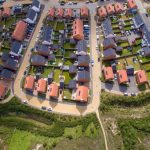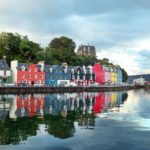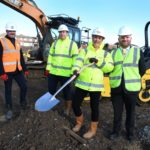News - Construction News
Building for people and wildlife

The Wildlife Trusts have released new guidelines for housebuilders, designed to guide developers in providing greener housing developments, that also accommodate wildlife and their habitats.
The Trusts are hoping to reverse decades of wildlife and habitat decline, whilst the government commits to building a further 300,000 homes a year until 2022, and says that the two can happily go hand-in-hand.
In ‘Homes for people and wildlife – how to build housing in a nature-friendly way’ the Wildlife Trusts asserts that the natural environment must be put at the heart of planning. With some 36sq miles, an area bigger than Brighton and Hove, due to be given over to housing, the government must look carefully at its commitment to be the first generation to leave the environment in a better state than they found it.
Rachel Hackett, Living Landscapes Development Manager for The Wildlife Trusts says: “A huge challenge lies ahead – thousands of new houses are to be built yet we need to restore the natural world. We’re calling on the government and local authorities to build beautiful, nature-friendly communities in the right places. Over the past century we have lost natural habitats on an unprecedented scale. Yet nature has its own innate value. It also makes us happy and we depend on the things that it gives us. Our new guidelines show that it’s possible to have both, so people can enjoy birdsong, reap the benefits of raingardens which soak up floodwater, and plants that bees and other pollinators need to survive. With good design the costs of doing this are a tiny proportion of the overall cost of a housing development, but represent a big investment for the future.”
The Wildlife Trusts are calling for the current focus on numbers of new homes to be replaced by a visionary approach to where and how we build.
Rachel Hackett continues: “We should prioritise places for new housing that are already well served by infrastructure. We should avoid destroying wildlife sites and locate new houses in places where they can help to restore the landscape and aid natural recovery. It’s possible to create nature-friendly housing by planting wildlife-rich community green spaces, walkways, gardens, verges, roofs, wetlands and other natural features. These gains for wildlife improve people’s health and quality of life too.”
The Wildlife Trusts’ blueprint for new nature-friendly homes highlights the myriad of social, environmental and economic benefits of this approach:
- Benefits for wildlife – better protection for wildlife sites, more space for wildlife, improved connectivity and buildings that are more wildlife-friendly
- Benefits for residents – daily contact with nature, improved health, protection against climate extremes, safer transport routes, good sense of community
- Benefits for the economy and wider society – cost-effective environmental protection, employment, space to grow local food, healthier and happier communities putting less pressure on health and social services
- Benefits for developers – satisfied customers, market value, enhanced brand, improved recruitment, improved environmental ranking
If you would like to read more articles like this then please click here.
Related Articles
More News
- Construction output decreased in February
23 Apr 24
The estimates show that monthly construction output is expected to have decreased 1.9% in volume
- Falling from height workplace injuries
22 Apr 24
Following the recent tragic news of Gogglebox star, George Gilbey's death is a stark reminder
- SMEs remain unprepared as cyber threats escalate
19 Apr 24
SMEs neglect cyber security, making them easy targets for a wide range of attacks, including






